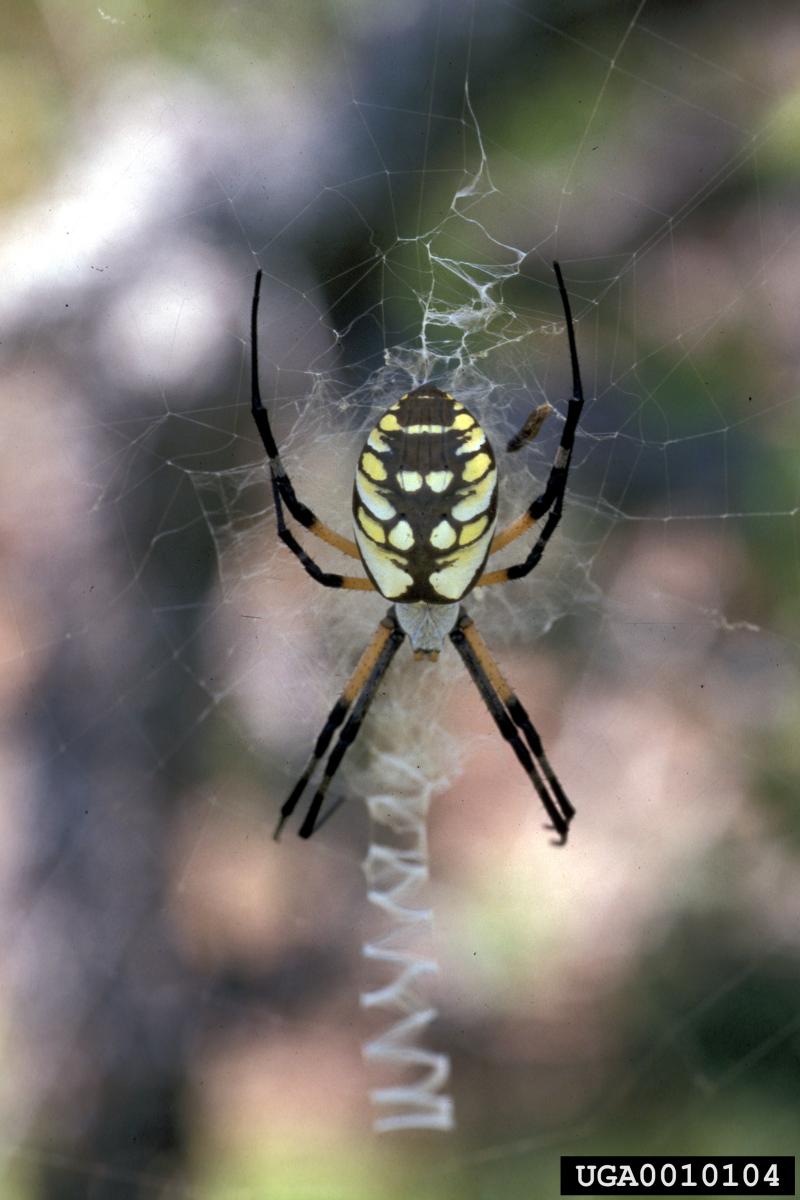Pest Profile
As gardeners harvest the last of their produce, many are noticing the black and yellow garden spider (Argiope aurantia) living among the vegetation (Figure 1). This spider may also be observed in crops, tall grass, or weeds that provide protection for their webs. The spiders (at least the females) stand out because of their bright colors, large size, and distinct large webs. While they are often overlooked, the spiders are common throughout the U.S.
Behavior

Black and yellow garden spiders are orb weavers (Family Araneidae) and they spin what is considered to be a stereotypical spider web. They use their web to catch prey, and are effective garden predators. When grasshoppers and other insects get caught in the web the spider bites and paralyzes them. Once paralyzed, the spider then wraps the insect in silk, and consumes it.
The adult female garden spider produces an egg sac in the fall, and you may notice it hanging from the center of her web. The adult spiders generally die after the first hard frost, but the eggs will survive the winter and the spiderlings will emerge in the spring.
Are They Dangerous?
This spider is not aggressive and tends to retreat if disturbed. Since it is a large spider, being bitten can be painful, but their bite is not considered dangerous. Individual reactions to insect or spider bites or stings can vary, so it is important to monitor for allergic reactions after the event occurs, and seek medical attention concerning any unusual reactions. If the spider is using a high-traffic part of the garden, consider using a large container to catch and relocate it to another area.
Additional Info: Good Garden Bugs by Mary Gardiner, PhD. 2015.